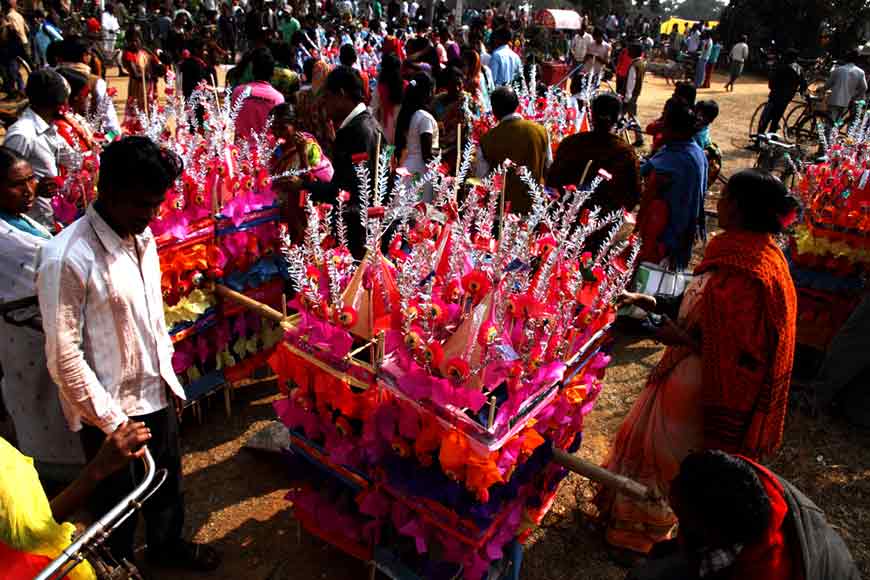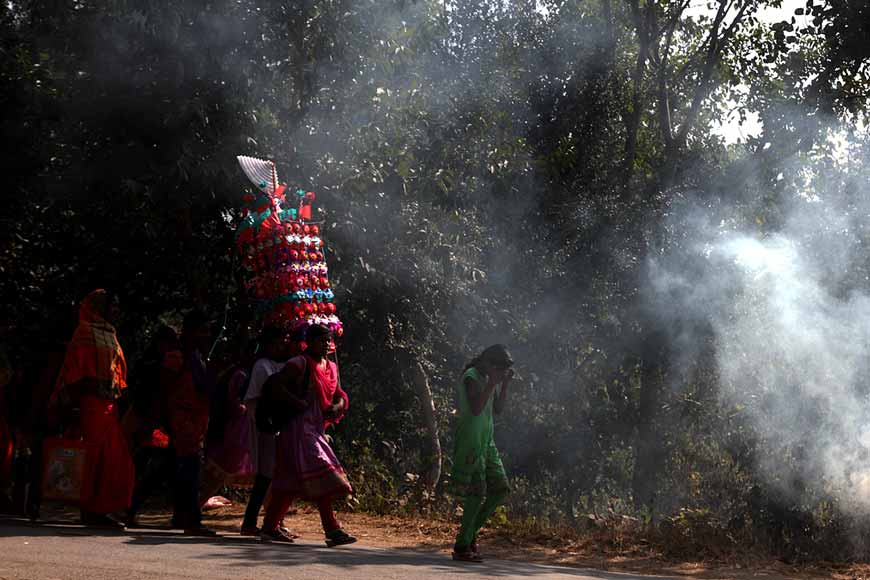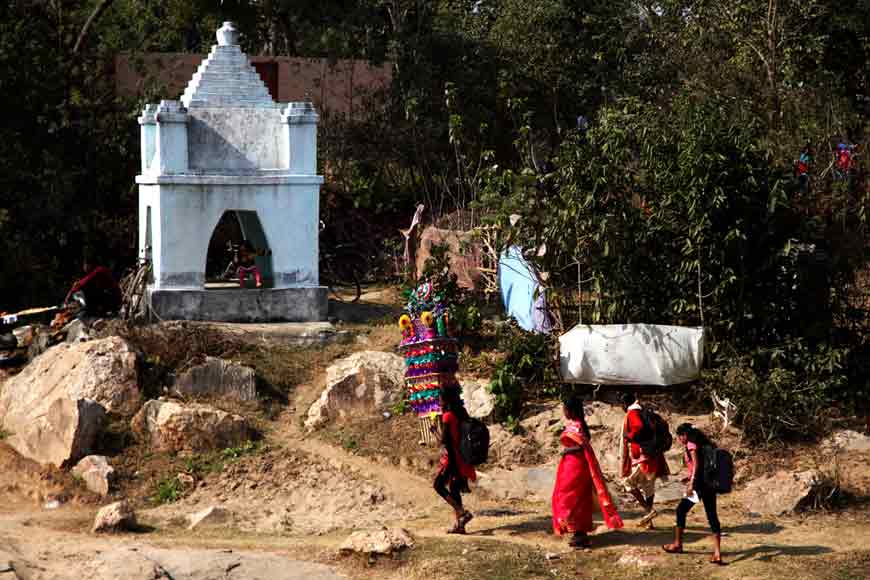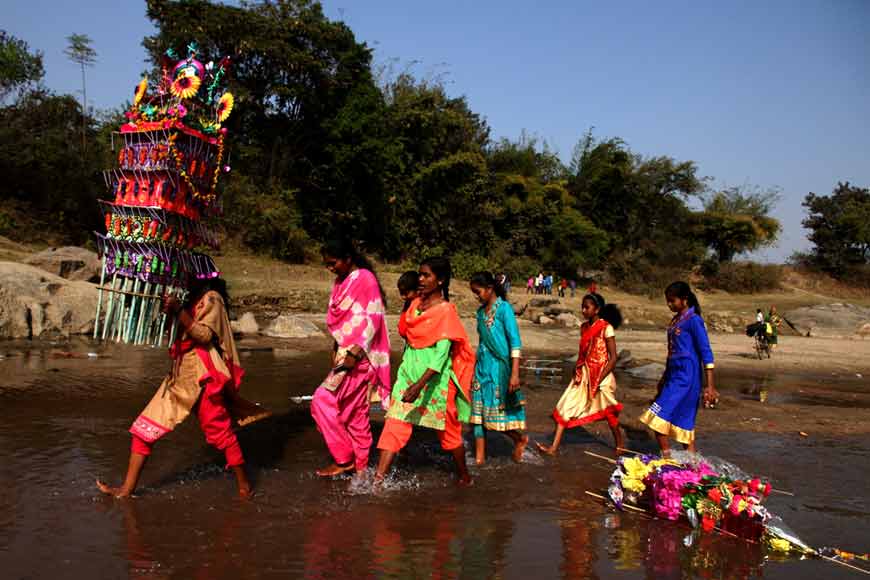Folk traditions come alive in Bengal’s Poush season - GetBengal story

Throughout the month of Poush or (December - January) in Bengal, a festival called Tushu worship is held that needs folk items called Tusu khola which is made up of a row of lamps set on a broad rim of an earthen pot. The total number of lamps depends on the size of the earthen pot and could vary between nine to fifteen or even twenty. The idol of Tusu is immersed on the last day of Poush and it is on that day that the lamps on the Tusu kholas are lit up before they are set afloat on a large pond, lake, or river. The Tusu kholas which are floated on the water are prepared in a certain way, while those which are set up on the ground have a different method of production. Tusu kholas are built on one, two, or three tiers, meaning they have arrangements of lamps in the same number of vertical rows. Tusu kholas are made by the potters of Rajgram, Sonamukhi, and other areas of the Bankura district and they are usually of two colours – red or black.

North Bengal too has its own unique method for providing festive illumination with lamps. During Diwali, several small lamps are set up on the rims of earthen pots. Sometimes, a medium-sized pot is placed on a large pot and then a smaller pot is placed on the medium-sized pot, after which small lamps are set up on the rims of all three pots. When all the lamps are filled with oil, fitted with wicks, and lit up, the combined effect presents a most charming spectacle.
Another idol that has a close connection with folk art is that of Bara Thakur. In the villages of South Bengal, particularly in the South 24-Parganas district, there is a long-prevailing custom of worshipping the Bara Thakur. Bara Thakur is a popular deity symbolizing Dakshin Roy or Kshetrapal. Some say it refers to the God of the Forests who is worshipped towards the end of Poush or the beginning of Magh ie. the end of December. The idol worshipped, is a particular type of earthen pot, which is placed upside down and is known as Bara ghot. A second tilted pot is placed beside the first one, which is said to symbolize Goddess Narayani, and the combination of these two idols is known as Bara Munda.

Bara ghots are produced by the potters’ community of South Bengal. Considered genuine works of folk art, these Bara ghots are of different heights, but the most commonly seen are those of 30 cm in height. Ghots of even 1 metre in height are made in some areas. First, an earthen pot is moulded and while still soft, it is placed on the ground with its head turned downwards and then an earthen strip made in the shape of a banyan leaf is attached to its body to complete the idol. As the pot is placed upside down, the portion below the rim looks like a human neck and the middle section of the pot looks like a human head. The ears of clay are added on both sides of this head-like portion and simultaneously the eyes, lips, mustache, chin, and nose are carefully engraved on the face. No mustache is however provided on the Narayani Ghot. Then the ghots are painted in black colour mixed with soaked chalk powder. The black paint is used to draw the eyes, eyebrows, semicircular lips, and chin. Many ornamental designs are drawn all around the embedded leaf-like strip which serves as a crown and a blooming lotus is sketched in the middle. The red colour is used along with the black paint.

The fact that the concept of this idol has been prevailing for a very long period is evident from the discovery of quite a few terracotta idols of similar shapes but smaller sizes during an archaeological exploration conducted in Harinarayanpur near Diamond Harbour in South Parganas. The practice of worshipping earthen pots with leaf-like headdresses prevailed not only in South 24 Parganas but also in various places of Medinipur and Howrah districts at one time, where the idols were known as Bara Ghots.
(Source: Folk Arts of West Bengal and the Artist Community by Tarapada Santra)
Photographs by Nilanjan Ray










